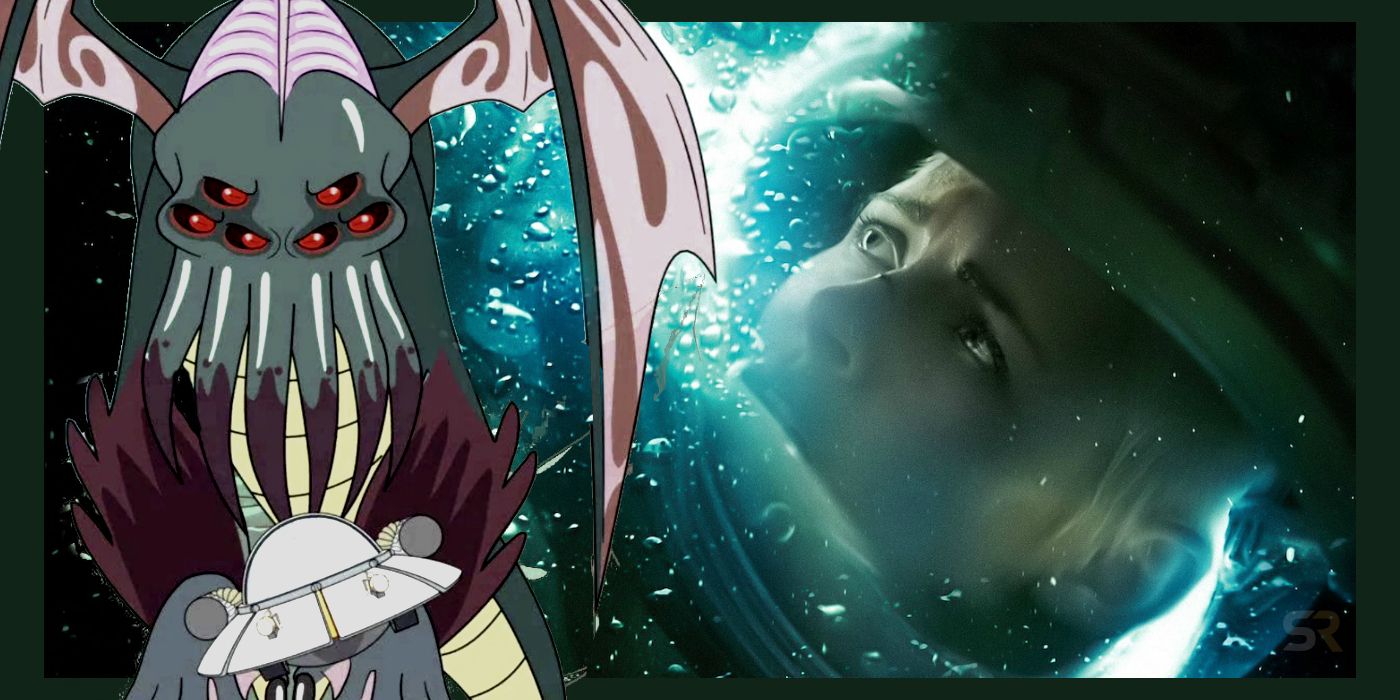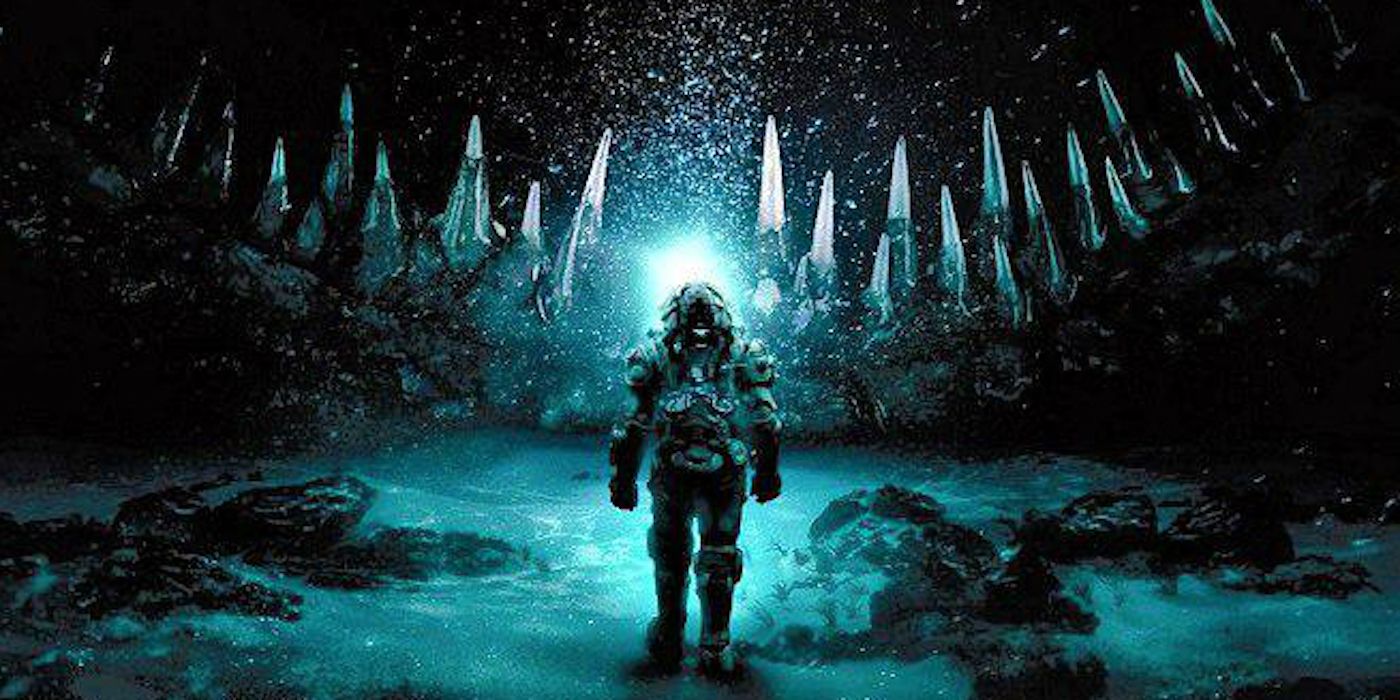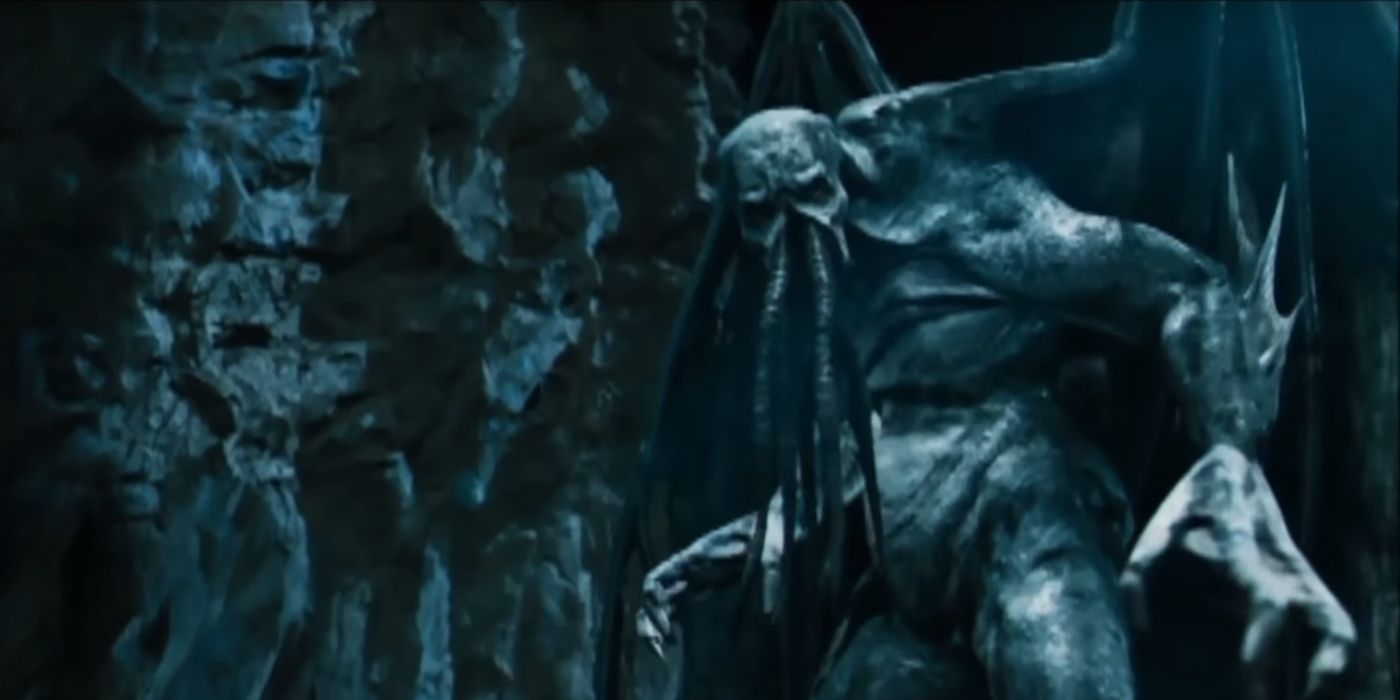
The final act of 2020’s Underwater introduced audiences to a monster of unprecedented scale and threat level. The fan theory that the Gargantuan beast was Lovecraftian horror Cthulhu has now been confirmed by movie’s director.
While some critiqued the movie for its late-game monster reveal, overall the monster itself was met with approval. The wider implications of the Titan were heavily debated. Some thought it brought the movie firmly into the Cloverfield cinematic universe, while others pointed to H.P. Lovecraft’s short stories.
As the credits roll, audiences are informed that despite survivor’s warnings, Tian Industries will continue deep-sea projects in the near future. Ominous, this brings into question the success of Norah’s (Kristen Stewart) attempts to slay the beast. She can’t kill what cannot die.

William Eubanks confirmed in an interview with Youtube reviewer Mr. H that the deep-sea creature was, in fact, Cthulhu. Calling Underwater a “secret Lovecraft love story”, Eubanks opened the door for a new style of horror movie. Devised by writer H.P. Lovecraft in the 1920s, Cthulhu is cosmic horror that poses a threat to all humanity, both in the original short story, “The Call of Cthulhu”, and in Underwater. Both the movie and the book preface the rise of the monster with an earthquake, a precursor to the true horror. Cthulhu is a Great Old One, a sleeping prehistoric god. In the story, a secret cult tries wake him with chants of, “in his house at R’lyeh dead Cthulhu waits dreaming.” In Underwater, Cthulhu is uncovered accidentally thanks to corporate greed.

Lovecraftian horror is defined by stirring gods, cosmic horror, and existential dread. The Great Old Ones and other Lovecraftian horrors have been adapted to the silver screen a handful of times, never to any extensive success. The stories combine creeping horror with bombastic monsters, making them difficult to translate onscreen without a measured hand and decent budget. Lovecraft himself is not without his flaws, and many of his stories include what some might construe as racist and xenophobic undertones. However, there is a precedent to horror movie adaptations removing problematic elements present in the source material. Both the 1990 miniseries and the 2017 adaptation of Stephen King’s It eliminate the sex scene between Beverly and the Losers’ Club.
However, Underwater is not a direct adaptation of “The Call of Cthulhu”. Instead, it borrows elements, particularly, its monster. A decent special effects budget would be key to translating Eldritch horrors to the big screen. Underwater is effective in its presentation of Cthulhu, sparking hope for future adaptations, and the world of special effects, both practical and CGI, is continually improving. The tools are there to next present audiences with the serpentine features of Yig, Father of Serpents, the warty, planet-sized entrails that make up Lu-Kthu, the scorpion-ant hybrid that is Baoht Z-ugga-Mogg, Bringer of Pestilence. Certain Lovecraftian horrors even slot well into contemporary worries about climate change and existential annihilation. If Cthulhu represented the ocean rising against humanity in Underwater, there is plenty of potential symbolism in Gods like the Twice-Invoked, who when summoned from the depths of the Earth collapses whole continents. Underwater itself has sequel potential. Although the monster is, seemingly, vanquished, in the original short story Cthulhu is also ripped to pieces only to reform.
The contemporary horror movie scene is constantly evolving, building on precedents set by genre disruptors. Robert Eggers’ The Witch brought on a new wave of folk horror that inspired movies like Hereditary, Midsommar, and the upcoming Gretel & Hansel. “The Call of Cthulhu” was the first story to formally introduce the literary world to the Great Old Ones. Underwater is underway to follow in its footsteps, opening cinema up to a new wave of Lovecraftian horror.
from ScreenRant - Feed https://ift.tt/38h7u9l

No comments: